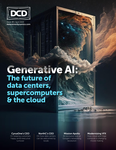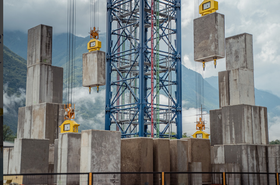It’s no secret that 2022 was one of the most destabilizing years in recent decades. The Russian invasion of Ukraine sparked a major energy crisis across Europe, disrupted global supply chains, and raised the cost of food, fuel, energy, and many vital components of manufacturing equipment.
While the IMF’s forecast for 2023 is less pessimistic than it was just a few short months ago, and CitiBank sees a 30 percent chance of a global recession this year, down from 50 percent in the second half of 2022, conditions remain incredibly challenging for businesses, prompting one key question for decisionmakers: how can they respond to these challenges and maintain their operational performance in the face of continuing volatility?
According to a survey by the World Economic Forum (WEF) in January, more than three-quarters of economists expect businesses to respond to the ‘gloomy’ economic outlook by optimizing supply chains. In 2022, there were huge strides made in new technologies, localized engineering networks, and circular management of electrical equipment, all of which offer exciting opportunities in the servicing market.
With this in mind, what are the three trends already emerging in 2023?
AI, AR, and cloud computing
As a result of facing major disruption during the coronavirus pandemic, 67 percent of US executives surveyed by EY are investing in technologies that will help make their production lines more transparent, resilient, and autonomous, an approach that is helping them to navigate the still-unpredictable business environment of 2023.
Remote and predictive maintenance, almost unheard of before the pandemic, is well on its way to becoming widespread best practice in 2023. This is thanks to advances in self-service and remote assistance augmented reality (AR) technology. Living proof of this is the growing demand for ABB’s AR self-support troubleshooting app CLOSER, and remote assistance technology RAISE.
We are also starting to see a shift from reactive to ‘predictive maintenance.’ Using cloud solutions and data analytics, customers can monitor and evaluate the condition and reliability of their assets in real-time to mitigate risks and optimize the allocation of operational and investment budgets.
What’s more, all of this can now be done remotely without even going near the equipment, thanks to innovations like wearable devices, interactive goggles, and digital assistants. In fact, we're seeing rising demand for installing ‘smart’ digital switchgear connected to cloud computing platforms that not only provide real-time data and analytics on asset condition, performance, and energy usage but can also be used to mitigate cybersecurity risks.
A great example is Shanghai Yueke Data Center, where ABB recently installed a medium and low-voltage power distribution solution to keep the data flowing 24/7. The UniGear ZS1 switchgear has been equipped with Relion® protection and control relays, which ensure any problems in the power system can be detected as early as possible, so issues can be eliminated, or the impact can be significantly reduced.
Domestic focus & energy security
By far the biggest concern for industrial organizations this year, especially in Europe, is energy volatility in terms of costs and security. Stark figures from the German Chambers of Commerce and Industry (DIHK) released in November 2022 showed that 12,000 companies surveyed expected their business to decline over the next 12 months due to rising energy costs, with the industry set to pay 40 percent more for energy than pre-crisis.
This is backed by a recent ABB Energy Insights survey of 2,300 large and small businesses worldwide, which revealed that 92 percent of business leaders are concerned about the threat rising energy costs pose to the profitability and competitiveness of their businesses.
In an effort to shore up the reliability and availability of energy powering their facilities, we are seeing localized production, workforce, and skills emerging as a prominent focus in 2023, particularly in sectors including utilities, data centers, semiconductor manufacturing, and oil and gas.
Life cycle management, sustainability & inflation
The universal challenge of navigating an inflationary environment means we are seeing reduced expenditures on large equipment, putting the onus on operational and facilities management teams to extend the lifecycle and productivity of existing electrical assets.
Retrofitting is the 2023 buzzword. Businesses are switching on to the fact that by upgrading outdated components they can achieve significant carbon and cost savings – reducing the cost of operating equipment by a third and extending its lifecycle by as much as 30 years. For example, by replacing older, non-digital circuit breakers with more intelligent breakers, linked up to an advanced monitoring system, facilities can improve their energy capacity by up to 20 percent and reduce their operational costs by up to 30 percent.
At a time when every minute of production time now counts, replacing aging and defective circuit breakers can also be done with minimal downtime. In addition, it allows customers to make new investments in stages rather than as a single, large outlay, optimizing capital expenditure.
The bottom line is that running a piece of equipment to the point of failure could cost up to 10 times more than investing in a program of regular maintenance, not to mention the environmental impact of buying new equipment. Applied across multiple industries, taking a circular economy approach has the potential to maximize customer efficiency, reduce costs and lower carbon emissions to deliver new levels of sustainable operations.
The energy and supply chain disruption caused by recent geopolitical events has been devastating for many industries, but it has also given businesses the push they needed to reimagine their operations and ensure they move forward in a more sustainable and cost-efficient way. From retrofitting to remote assistance, the trends that are taking hold are thankfully widely available, with 2023 shaping up to be the year that we all look to work smarter and more responsibly – both financially and environmentally.





